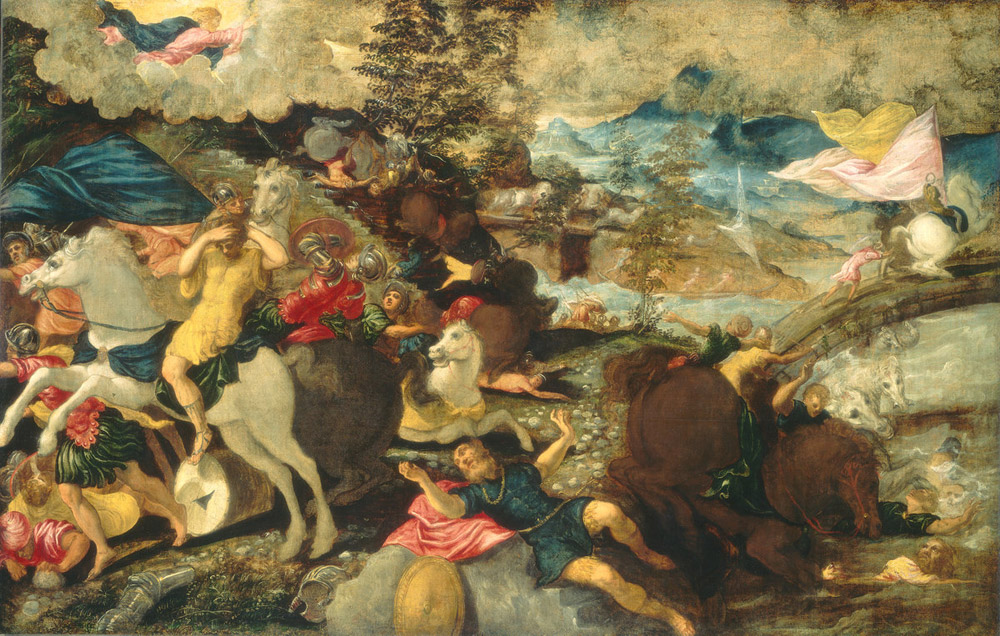Jacopo Tintoretto, The Conversion of St. Paul

Circa 1545
Oil on canvas, 60 x 93 in. (152.4 x 236.2 cm.)
National Gallery of Art, Washington, DC: Samuel H. Kress Collection, 1961.9.43
As in his
Christ Among the Doctors,
Tintoretto sees the years of Christ as the time when, as Yeats put it, "twenty centuries of stony sleep / Were vexed to nightmare by a rocking cradle." He presents the event as a vast upheaval with tempests, floods, and horses frantic to escape. In the foreground we see not Paul but two soldiers, one fallen and the other teetering on his horse and shielding himself from the light. They and their panicked companions represent the twenty centuries, the old law that Paul will challenge in the Letter to the Romans. The same can be said of the men drowning in the water on the lower right, an allusion to the bodies traditionally pictured floating in and on the waters of the Flood
example.
The source of all this turmoil is expressed by the strong diagonals that emanate from the figure of Jesus, who calls from the clouds to Paul, the tiny pink figure lying supine like his horse. Why so tiny? In one sense, the turmoil below him represents his and every Christian's turmoil when being "loosed from the law of death" (Romans 7:6). It is surely no coincidence that the brown-toned diagonal where he lies fallen proceeds down along the gray steps to the falling horse and then the waters of the Flood that "prefigures Baptism, which saves you now" (I Peter 3:21).
Read more about St. Paul.
Source: National Gallery of Art, Washington, DC